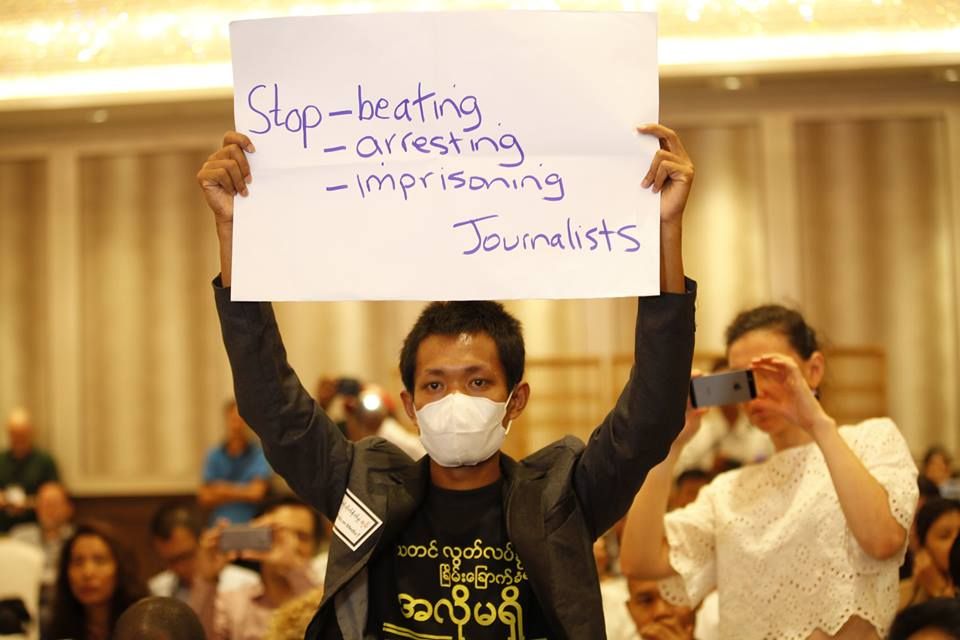A protester holds up a banner during the International Press Institute’s conference in Yangon in March. PHOTO/COCONUTS MEDIA
Censorship may have officially ended in Myanmar in 2012, when the government finally stopped asking media outlets to submit their work for scrutiny before publication. But, according to new rankings released by the Committee to Protect Journalists, repression of the press is still alive and well – at least in comparison to the rest of the world. The organisation has ranked Myanmar the ninth most heavily censored country on Earth. We’re in top 10 company with North Korea, Eritrea and Saudi Arabia.
Their explanation, published online, cited multiple remaining restrictions to free reporting. Under the Printers and Publishers Registration Law, brought in last year, news deemed insulting to religion is banned. Archaic colonial-era laws are used to intimidate journalists reporting on the army. Reporters from weekly news journal Unity were jailed after reporting on a military facility they alleged was making chemical weapons. Aung Kyaw Naing, a freelance journalist, was shot dead in military custody in October 2014. The list goes on.
Sadly, it could be worse. Eritrea, which was ranked the world’s most censored nation, doesn’t allow any independent media. Even journalists working for state media fear arrest. The authorities don’t even bother with trials. North Korea comes surely a close second, followed by Saudi Arabia and Ethiopia. At number 10, deemed slightly preferable to Myanmar, is Cuba, where all print and broadcast media remains under the control of the government.
CPJ used a series of benchmarks to determine the extent of censorship, including absence of a private media, monitoring of journalists by the authorities, restrictions on licensing of media outlets and movement of reporters.
The world’s most censored countries, according to CPJ:
1. Eritrea
2. North Korea
3. Saudi Arabia
4. Ethiopia
5. Azerbaijan
6. Vietnam
7. Iran
8. China
9. Myanmar
10. Cuba



